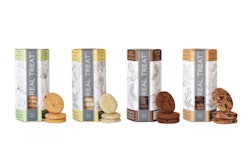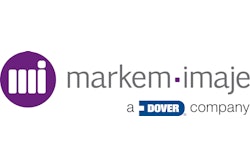Author Paul Palmieri - to see original post click here.
Reprinted with permission from Digital Commerce 360 -
Much has been written about the emergence of direct-to-consumer (DTC) brands and how they are stealing market share from iconic consumer packaged goods (CPG) brands. But too many CPG brands focus on what they must lose that they have lost sight of what they could gain.
I’m not just talking about riding the ecommerce wave of 2020 and leveraging online channels to increase top-line revenue. I’m talking about what matters: profitability.
CPG brands already have their own playbook for success, especially when it comes to distribution. They’ve been operating in an omnichannel environment for years, even decades. Compared to DTCs, they are ahead of the game. However, what they are missing is the same technology that DTC brands need—a transparent view and command of their entire value chain.
Here are the four ways that I believe CPG brands could forge ahead with sustainable, healthy growth in the ecommerce channel—and defy the odds and increase their bottom-line during margin-killing sales events like Black Friday and Cyber Monday.
Advertise outside of shopper marketing platforms
Let’s start with customer acquisition since 2000% top-line growth seems to now be the aspirational target for early-stage DTC brands. What are they doing that traditional brands aren’t? Start scrolling through your social media feed and you’ll figure it out quickly. Mine, for instance, is full of both branding and direct-response ads from Bombas, Anova and Caraway. Assuming I believe I must have premium, chemical-free cookware in my life, I can tap to buy it right away.
DTC brands are using Facebook, Instagram and Google to drive conversion, and it’s working. Traditional brands are currently only leveraging those social platforms for branding; for performance, they turn to the big (and safe) shopper marketing platforms like Amazon Ads, Kroger Precision Marketing, Walmart Ads and Instacart Ads.
While these are tried-and-true shopper marketing platforms, they can be frustrating, especially during massive sales events like we saw when prices for PPC bids and sponsored placements skyrocketed. Brands were advised to increase their spending by 200% to stand out from the noise during Amazon Prime Day, and for many, it was not worth it. If CPGs took a page out of the DTC playbook and used search and social for top-line growth, it would significantly diversify their spending.
CPGs should remove silos, both in personnel and data
Ask any startup employee what they like best about working with a small team and most will say it’s extreme agility. Once your company reaches a specific size, it’s common to see silos emerge, where departments don’t communicate or integrate their data. Since most DTCs start small and are digital-first, they have an ecommerce team that incorporates marketing, sales and operations together. As I mentioned, though, even those most agile DTC ecommerce teams are slowed by the lack of a robust technology stack that can do things like unlocking inventory transparency, forecast demand or respond to market fluctuations.
And speaking of slow: Both DTCs and CPG brands must often wait weeks or even months before receiving performance reports. This cripples their ability to make strategic decisions. In today’s fast-moving ecommerce world, if you’re not getting data in real-time to make real-time decisions, you’re already behind.
Protect your margins—at all costs
Last year, there were more than 12,000 products that each did $10M or more in revenue on Amazon alone. I would love to know what the margins were on those products, wouldn’t you? Moreover, I would love to know how hard-hit companies were during Prime Day and other deeply discounted offers, particularly during this upcoming holiday season. I’m willing to bet that many ecommerce businesses have zero visibility into how aggressive discounting impacts their net profit margins (and CAC, too) until it’s too late.
Take the oral health care category, for example. To the internet’s excitement, Crest Whitestrips were 44% off. No kidding, this deal made every single “Prime Day must buy” list I saw. Now, I’m positive that the folks at Procter & Gamble are running a tight ship when it comes to discounting strategy, and they did all the calculations they needed to go to that number. It’s likely the volume of Whitestrips sold would be enough to whiten the teeth of every human on Earth twice over. But are they, and the dozens of others in the oral health category, able to pull levers such as net margin to optimize product, price and promotion in real-time across the entire ecommerce value chain? Again, it comes down to technology and the ability to execute actions and adjustments with the click of a button.
Double down on innovation
CPG companies have entire departments dedicated to research and development and innovation. Most DTCs do not. They have an innovative challenger brand at first, but that level of innovation is wildly unsustainable. Why? Because they are under pressure to hit their numbers, so all the time and energy after launch is focused on sales and fulfillment, not iterating on product development. If you’re able to automate as much as possible and leverage machine learning to do the heavy lifting, you’ll free up more creative resources for strategy and innovation. That is what the human brain is uniquely suited to do.
The shift to online is happening, and much faster than it was supposed to. Due to the 2020 pandemic, ecommerce growth in the U.S. has effectively skipped two full years; online sales hit levels not expected until 2022. The boost is enough to offset the decline in brick-and-mortar spending this year.
If you are with a CPG brand facing this massive shift and scrambling to keep pace, remember that it’s not about staying ahead of the challenger brands. It’s about anticipating the needs of the market and taking control of your ecosystem. When you do this, you can achieve better bottom-line results, no matter the number of channels—or competitors.
Tradeswell is a cross-channel algorithmic trading platform designed to help DTC and CPG brands sell more successfully on digital platforms like Amazon.com and Walmart.com.

























